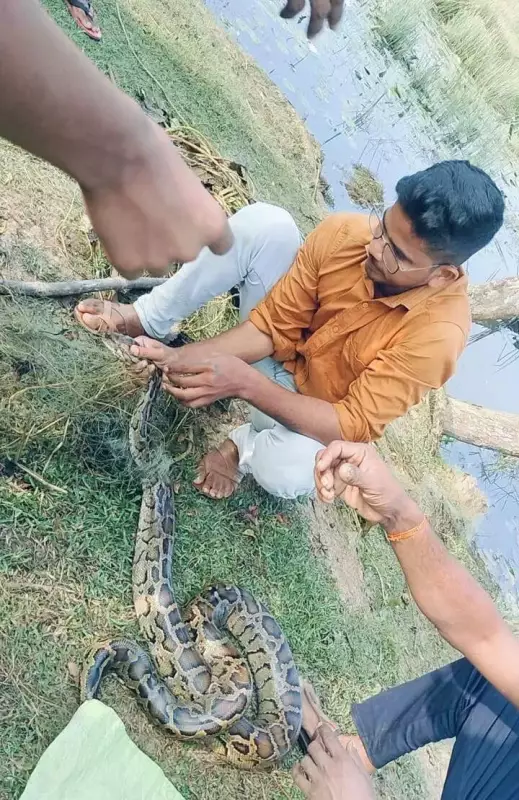
In a remarkable display of wildlife conservation, forest department officials in Odisha have successfully rescued two enormous reptiles from the waters of Bhitarkanika National Park, one of India's most significant crocodile sanctuaries.
The rescue operation, conducted by skilled forest personnel, targeted two large reptilian species that required immediate intervention. Located in the Kendrapada district, Bhitarkanika National Park is renowned for its substantial population of saltwater crocodiles and serves as a crucial habitat for various endangered species.
Swift Action Saves Precious Wildlife
Forest department teams sprang into action after identifying the reptiles in distress. Using specialized equipment and extensive training in wildlife handling, the officials carefully captured and transported the animals to safety. The operation demonstrated the department's commitment to protecting even the most formidable inhabitants of the park.
Bhitarkanika, often called the crocodile kingdom of Odisha, spans approximately 672 square kilometers and represents one of the most diverse ecosystems in eastern India. The park's intricate network of creeks, rivers, and mangrove forests provides ideal conditions for saltwater crocodiles, which can grow up to 23 feet in length.
Conservation Success Story
This recent rescue adds another chapter to Bhitarkanika's conservation success story. The park has been instrumental in reviving the saltwater crocodile population through dedicated breeding and protection programs. Forest officials regularly monitor the reptile population and intervene when animals show signs of distress or venture into human settlements.
The rescued reptiles are currently under observation and receiving necessary care from wildlife experts. Preliminary assessments indicate both animals are in stable condition and will be released back into their natural habitat once deemed fit for return.
This operation underscores the critical role of forest departments in maintaining ecological balance and protecting India's rich biodiversity, particularly in sensitive ecosystems like Bhitarkanika National Park.





